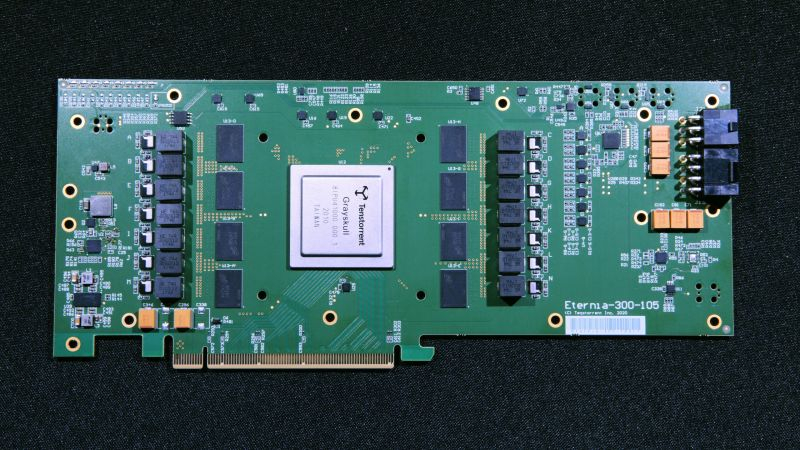Legendary processor architecture designer Jim Keller, who has created many commercially successful chips from Apple, Intel, AMD and Tesla, has recently been focused on creating computing accelerators on the staff of the startup Tenstorrent. The eminent engineer is convinced that at this place of work he will be able to create artificial intelligence system accelerators that will have greater configuration flexibility and lower cost compared to Nvidia solutions.

Image source: Tenstorrent
Keller shared some of his thoughts with representatives of the Nikkei Asian Review resource. “There are a lot of market segments that are underserved by Nvidia,” said an optimistic Jim Keller, who is CEO of US startup Tenstorrent at this point in his career. As AI becomes more widespread in smartphones, cloud services and even electric vehicles, he explained, many customers are looking for more affordable alternatives to Nvidia accelerators. Not every company, according to him, is ready to pay $20,000 for each accelerator of this brand.
The second generation of Tenstorrent accelerators, which Keller had a hand in creating, will begin shipping to the market by the end of this year. According to representatives of the company founded in 2016, in some areas of application, Tenstorrent solutions are superior to Nvidia accelerators in energy efficiency and speed. Ready-made systems of the Galaxy family are three times more efficient in terms of power consumption, and at the same time one-third cheaper than Nvidia DGX.
Tenstorrent can reduce the cost of its accelerators and their power consumption, among other things, by eliminating the use of expensive HBM memory. Tenstorrent initially designed the architecture of its accelerators in such a way as to reduce the time it takes to transfer information between the chip and the memory chip without using expensive HBM. This approach will allow replacing both HBM and GPU in certain areas of application of artificial intelligence accelerators. According to Keller, many companies are looking for more affordable alternatives to HBM, but it will take years to shake the current market position of this type of memory. The head of Tenstorrent believes that in certain market segments there will be many players capable of satisfying demand better than Nvidia.
Tenstorrent accelerators use hundreds of tiny processor cores that can be configured quite flexibly in terms of the computing tasks they solve. For this reason, the company’s approach to creating accelerators will allow it to tailor its developments to the needs of a wide variety of market segments. The cores of these accelerators, according to the developer, are able to “think” independently and choose which data to process first and how to increase the efficiency of calculations. The same processor cores can be used in both smartphones and server systems – the difference will mainly lie in their number. Keller finds it difficult to determine which application of artificial intelligence will be most in demand, for this reason Tenstorrent creates solutions that are suitable for a wide range of tasks.